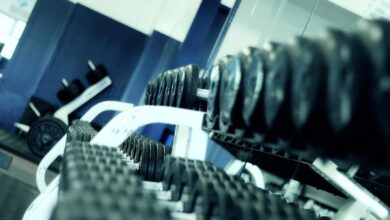Maximize Your Gains: The Ultimate Guide to Effective Workout Recovery for Optimal Performance

In the journey towards peak physical performance, what you do outside the gym is just as crucial as what you do inside it. While training is undoubtedly the cornerstone of fitness, the importance of workout recovery cannot be overstated. In fact, recovery is where the magic happens—muscles repair, strength builds, and performance potential is maximized. This comprehensive guide will delve into the fundamentals and advanced strategies of workout recovery that can help you optimize your fitness gains.
Understanding the Importance of Recovery
When you engage in physical exercise, especially strenuous resistance or endurance training, you’re essentially causing micro-tears in your muscle fibers. Recovery is the process by which these tissues repair themselves, growing stronger and more resilient to future stressors. Neglecting recovery not only hampers your progress but can also increase the risk of injuries, overtraining syndrome, and burnout.
The Science Behind Muscle Recovery
- Muscle Protein Synthesis: After a workout, your body begins a process known as muscle protein synthesis (MPS), which is crucial for muscle repair and growth.
- Glycogen Restoration: Glycogen, your muscles’ primary energy source, is depleted during workouts. Effective recovery involves replenishing these glycogen stores to ensure that you’re fueled for the next training session.
- Hormonal Response: Hormones like cortisol, testosterone, and human growth hormone (GH) play pivotal roles in recovery. Balancing these hormones through rest and nutrition significantly aids the recovery process.
Essential Recovery Techniques
1. Nutrition: Fueling Recovery
Nutrition is paramount in facilitating recovery. Here’s how you can optimize it:
- Protein Intake: Consume an adequate amount of high-quality protein post-workout to support MPS. Aim for at least 20-30 grams of protein within two hours after exercising.
- Carbohydrates: Replenish glycogen stores by consuming carbs post-exercise. A 3:1 ratio of carbs to protein is often recommended.
- Hydration: Rehydration is critical for recovery, especially if you’ve lost fluids through sweat. Ensure you’re consuming adequate water or an electrolyte-infused drink to restore hydration levels.
2. Sleep: The Unsung Hero
Sleep is the body’s natural recovery tool. It’s during sleep that the majority of muscle recovery and repair occurs. Aim for 7-9 hours of quality sleep per night. Consider creating a sleep-conducive environment by keeping your room dark, cool, and quiet.
3. Active Recovery
Engaging in light activities like walking, yoga, or swimming on rest days can promote blood flow and aid recovery without placing additional strain on your body.
4. Stretching and Mobility Work
Incorporate a routine of static stretching and dynamic mobility exercises post-workout to reduce muscle stiffness and prevent injury. Techniques such as PNF (Proprioceptive Neuromuscular Facilitation) stretching can be particularly effective.
5. Massage and Myofascial Release
Therapies like sports massage, foam rolling, and using massage guns can help release muscle tightness and improve circulation. These methods aid in breaking up scar tissue and myofascial adhesions.
6. Cold and Heat Therapies
- Ice Baths: Useful for reducing acute muscle soreness and inflammation.
- Saunas and Hot Baths: Heat therapy can help relax muscles and improve circulation.
7. Listening to Your Body
Recognize signs of overtraining such as persistent soreness, fatigue, and decreased performance. Adjust your training and recovery protocols accordingly.
Advanced Recovery Techniques
1. Compression Therapy
Using compression garments can minimize muscle soreness and swelling, potentially speeding up recovery.
2. Contrast Water Therapy
Alternating between hot and cold showers can boost circulation and promote muscle recovery.
3. Nutrient Timing
Strategically timing your nutrient intake can have significant benefits. Consider consuming a protein-rich shake enriched with essential amino acids immediately after workouts to kickstart the recovery process.
4. Supplementation
- BCAAs (Branched-Chain Amino Acids): Help delay muscle soreness and promote muscle repair during prolonged exercise.
- Omega-3 Fatty Acids: Anti-inflammatory properties that may aid in recovery.
- Creatine: Known for enhancing muscle recovery and increasing strength.
5. Mindfulness and Stress Reduction
Chronic stress negatively impacts hormone balance and recovery. Practices like meditation, deep breathing, and mindfulness can support mental recovery and hormone regulation, optimizing physical recovery.
Creating a Personalized Recovery Plan
- Assess Your Needs: Evaluate your fitness level, training intensity, and recovery requirements. Understand that recovery should be tailored to your individual goals and physical demands.
- Set Realistic Goals: Establish clear recovery goals that align with your training regimen, whether it’s improved performance, increased muscle mass, or enhanced endurance.
- Track Your Progress: Keep a recovery journal to monitor your strategies and assess their effectiveness over time. This can help you make informed adjustments.
- Consult Professionals: Don’t hesitate to seek advice from healthcare providers or fitness professionals, especially if experiencing persistent pain or performance issues.
Conclusion
Recovery is an integral component of any successful fitness regimen. By implementing a balanced combination of nutrition, rest, active recovery, and advanced techniques, you can ensure that your body has the tools it needs to repair, grow, and perform at its best. Remember, effective recovery is personalized and requires consistency, patience, and attentiveness to your body’s signals. Embrace the recovery process not just as a supplement to your training, but as an essential pillar of optimal performance. With a thoughtful approach to recovery, you can truly maximize your gains and sustain your fitness journey for the long haul.
Recommended Protein
Recommended BCAA
Recommended Creatine
Recommended Omega 3




